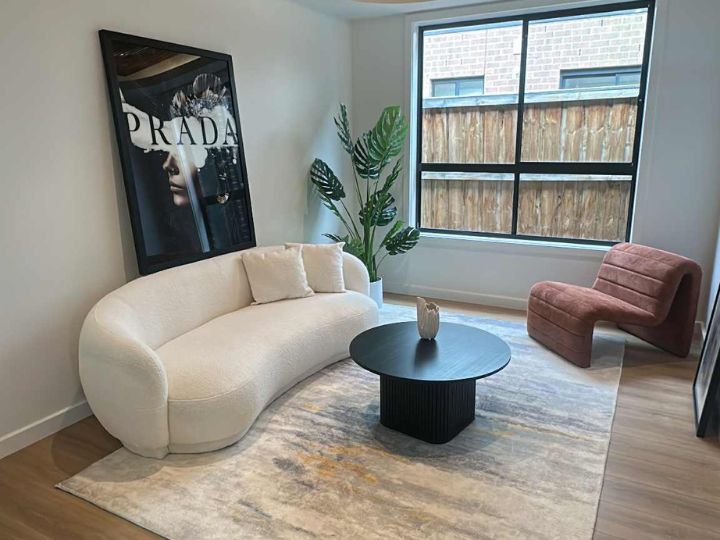
Beyond Staging: How Interior Design Styles Boost Property Value
When it comes to preparing your home for sale, home staging has long been recognised as a proven strategy to make properties more appealing and sell faster. But what happens once the sale is complete? This is where interior design styles step in. While staging focuses on creating an emotional connection during the selling campaign, interior design ensures a property continues to offer comfort, style, and value long after the open home ends.
For homeowners, investors, and sellers alike, understanding how property styling, home staging, property organisation, and professional home staging fit alongside interior design can help maximise both immediate and long-term returns.
Staging vs Interior Design – Complementary Roles
At first glance, staging and interior design may appear similar, but they serve different purposes:
-
Home staging is about preparing a property for sale, using furniture, accessories, and layout to appeal to the widest range of buyers. It’s short-term, cost-effective, and focused on achieving the highest possible sale price.
-
Interior design goes beyond the sale, shaping how the space feels and functions for daily living. It considers colour palettes, design styles, materials, and layouts that enhance long-term comfort and value.
Think of staging as creating the perfect first impression, while interior design ensures that impression lasts.
Why Staging is Still the First Step to Adding Value
Before interior design comes into play, staging remains the most powerful way to influence buyers. Research shows that staged homes sell faster and can achieve 5–10% more on the final sale price compared to non-staged properties.
Here’s why:
-
Emotional first impression: Buyers often know within minutes whether a home feels right. Staging helps create that “wow” moment.
-
Professional photography: Staged homes look better online, driving more clicks and attracting more potential buyers to inspections.
-
Market advantage: With competition high, staging sets a property apart and gives it the polished, ready-to-move-in look buyers crave.
Without staging, a property risks looking cold, cluttered, or uninviting all factors that can reduce perceived value.
Interior Design Styles That Add Value After Staging
Once staging has helped secure a sale, interior design styles come into play to maintain and enhance a property’s long-term worth. The right design choice can future-proof a home and appeal to both residents and future buyers.
Here are some popular styles in Australia:
Modern & Contemporary
Clean lines, open spaces, and neutral colour palettes create a timeless look. Contemporary design adapts easily to changing trends, making it a safe investment.
Coastal & Hamptons
Particularly popular in coastal cities like Sydney and the Gold Coast, this style uses whites, soft blues, and natural textures to create a breezy, relaxed vibe.
Scandinavian & Minimalist
Focusing on simplicity, functionality, and natural light, these styles appeal to younger buyers and renters looking for calm, uncluttered living spaces.
Classic & Traditional
For heritage homes or buyers who prefer timeless character, traditional design adds depth and elegance with warm tones, ornate details, and rich materials.
Industrial Chic
Exposed brick, concrete, and steel accents suit urban apartments and warehouse conversions. This style attracts buyers looking for edgy, modern spaces.
By aligning the interior design with a property’s architecture and location, homeowners ensure the style not only looks good but also adds measurable value.
How Interior Design Choices Extend the Benefits of Staging
Where home staging stops at creating a beautiful, market-ready home, interior design builds on that foundation. Choices in design impact how a property feels to live in and how much buyers are willing to pay in the future.
Key considerations include:
-
Flow and layout: Good design improves how people move through a space, enhancing both liveability and functionality.
-
Colours and mood-setting: Neutral schemes can broaden appeal, while carefully chosen accent colours add personality.
-
Materials and finishes: High-quality, durable finishes like stone benchtops or hardwood floors retain their value over time.
-
Sustainability: Energy-efficient appliances, natural lighting, and eco-friendly materials reduce long-term costs and attract environmentally conscious buyers.
Professional Home Staging vs Professional Interior Design
Both property styling and interior design require expertise, but they differ in execution and outcome:
-
Professional home staging involves styling a home with hired furniture and décor to appeal to buyers during a short marketing campaign.
-
Professional interior design involves creating a tailored, permanent plan for a home’s interiors from colour schemes to custom furniture selections.
In many cases, the two complement each other. Staging secures the sale, while interior design ensures the home retains its value and continues to appeal to future buyers or tenants.
Maximising Value: Staging First, Then Design
The smartest approach for homeowners and investors is to use both strategies at the right time:
-
Stage to sell: Present the property at its best for photos, inspections, and buyer appeal.
-
Design for longevity: Once sold, interior design ensures the space is functional, stylish, and sustainable.
This combination ensures maximum return on investment. Sellers get a higher sale price, while buyers move into a home with lasting value.
Final Thoughts: Interior Design Complements, But Staging Sells
While interior design styles undeniably add long-term value to a property, it’s property home staging that drives the sale. For Stellar Staging, this balance is key: we know staging creates that all-important emotional connection, while design choices carry the benefits forward into everyday living.
When used together, staging and interior design aren’t in competition — they’re partners in maximising property value.
